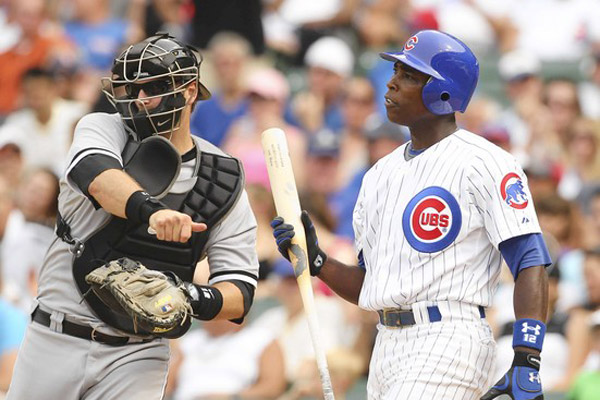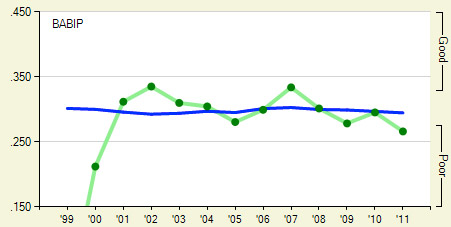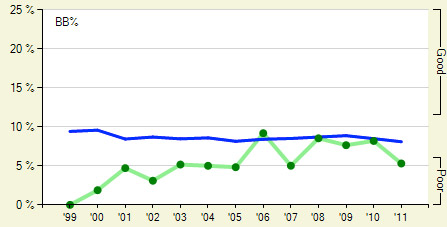
OK, so the Cubs are going to be bad this year, the first of the Epstein Empire:
So the others teams' half-innings overwhelmed what was a league-average offense, albeit one that that was pretty much station-to-station, scorning bases on balls (only Houston took fewer) and that kind of tofu baseball. From that 2011 powerhouse, they've spent the offseason offloading their two OPS leaders, the only two over 111 OPS+ among the regulars. They've replaced their flawed but predictable corner infielders with flawed but unpredictable players.
So this season they could be even worse. And that's probably a good thing.
"OPS+" just means "OPS [on-base plus slugging] measured against the league average, and adjusted for ballpark factors. An OPS+ over 100 is better than average, less than 100 is below average." So getting rid of two respectably-above-average hitters, Carlos Peña and Aramis Ramirez, will put a dent in the Cubs' offense. No one seems to know what to expect from Ian Stewart and Bryan LaHair—two of the best prime-age four-A hitters in baseball—so the possibility of a steep drop at the corner infield positions has to be considered.
On the other hand: Alfonso Soriano should be better this year than he was last year, and not because he's hitting the ball well in the early spring (he went deep again today, though it was against Bronson Arroyo), though that's nice too. Last year he was atypically bad, worse than even his age-related decline would suggest.
First off, his batting average on balls in play was way off his career numbers, even his recent ones. Some of that is to be expected, because he doesn't have the wheels he once did. But BABIP is a decent measure of luck, and Soriano appears to have been very unlucky last year:

In 2004-2005 Soriano was an All-Star, but he was, for him, in a bit of a slump: his on-base plus slugging went from .880 and .863 in the years prior to .807 and .821. Since was playing in the the extremely hitter-friendly confines of The Ballpark at Arlington, his OPS+ (which adjusts for parks) was 100 and 109; he had a lot of value for his speed, but his Texas numbers were ballpark inflated. His big Cubs contract only came after he followed that with a huge bounce-back, an arguably career-best year in Washington in 2006.
Soriano's walk rate also declined substantially. He's not known for his batting eye, but this might surprise you:

As his physical skills have declined, he's actually improved his patience a bit, to something resembling normalcy—at least until last year, when he regressed back to the walk rate he had in his heyday with the Yankees and Rangers, the years he could get away with his intemperance at the plate.
Between his career-worst BABIP and regression in his walk rate, Soriano had a career-worst OBP of .289, even lower than his 2005 OBP of .309 (when he was nonetheless an All-Star). In turn, his on base-plus-slugging was a mediocre .759.
He'll never live up to his massive contract, but it's reasonable to expect that he won't be as bad this year as he was last year. And that's what almost everyone predicts, from Fangraphs' litany of projections to Rotowire to Baseball Prospectus: not a return to glory, but something closer to his 2010 year in Chicago or his 2004 year in Texas. And that could buy the Cubs a couple more wins… or make him a bit easier to unload.
Photograph: Chicago Tribune


